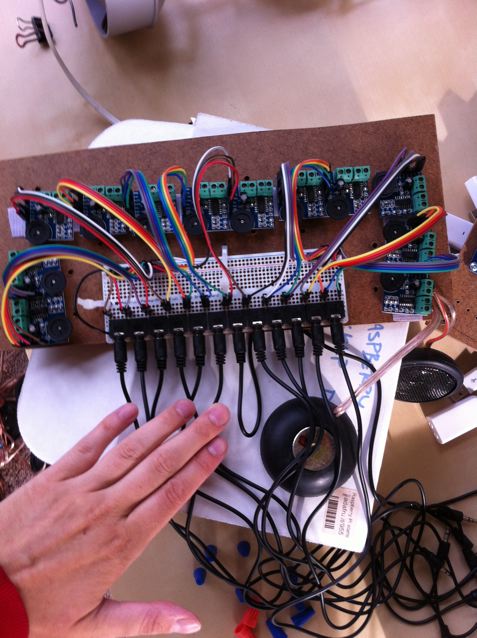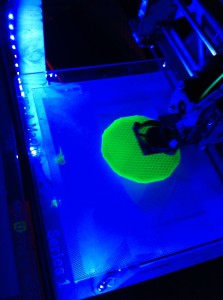The blog has been pretty silent for a while, I realize, but it hardly means I’m not keeping myself busy. Quite the opposite.
A small crew and I have taken on bringing Status Update, my project from the Artists on the Verge fellowship last year, out to the middle of the desert for the Burning Man festival.
For anyone unfamiliar, Burning Man is a huge annual art festival in the middle of the Nevada desert. It’s the world’s largest leave-no-trace event, and it’s what largely inspired me to start making interactive work in the first place. You can read more about it here.

Getting this project rebuilt to withstand one of the least hospitable places on the planet is a really great challenge.
Let the fun begin!
Power!
My primary collaborator David is in charge of the power system. The middle of the desert doesn’t have any power but what we bring out with us, and where I thought everything would run on a (large, noisy) gas generator, he’s gone all out and decided to build a system that will make the whole project run via solar panels.
This is huge.
No, literally. Here’s a photo of one of the panels. It’s 18 feet long.
We’ll be using at least 6 of these.

And these are the rechargeable batteries those panels will charge. These each weigh about 50 pounds. My hand is on the floor for scale; they’re about the size of a car battery:

All that still wouldn’t run the equipment the older version of the project used, so, the amplifiers and computer are being replaced with new ones that are much smaller and much more energy efficient.
Computer!
The original version ran on a mac mini and an Arduino mega. The desert version will run on a wee unix computer called a Beaglebone. It fits nicely inside a mint tin:

Sound!
The original version used 12 standard consumer stereo audio amplifiers, like this:

Those are being replaced by 12 of these:

Programming!
Because the computer is so different, the software that runs everything must be rewritten in a new language. I’ve been spending the last several months digging in to computer programming. So far I really love it, though it’s slow going and I’m REALLY grateful for very smart collaborators and friends to help, people who understand unix kernel hacking – which has been necessary to force the computer to recognize all 24 channels of audio – and the math to calculate kilowatt hours, charging rates, voltage drops over the length of cable runs, relative merits of alternating vs. direct current… the list goes on.
This weekend, we finally got our Kickstarter together. If you have the interest and means to help us out, we’d be so grateful.
This week, we’ll be getting the steel we need to build the lampposts, and hopefully all the components I need to finish building the amplifier system will arrive. More updates soon!

























